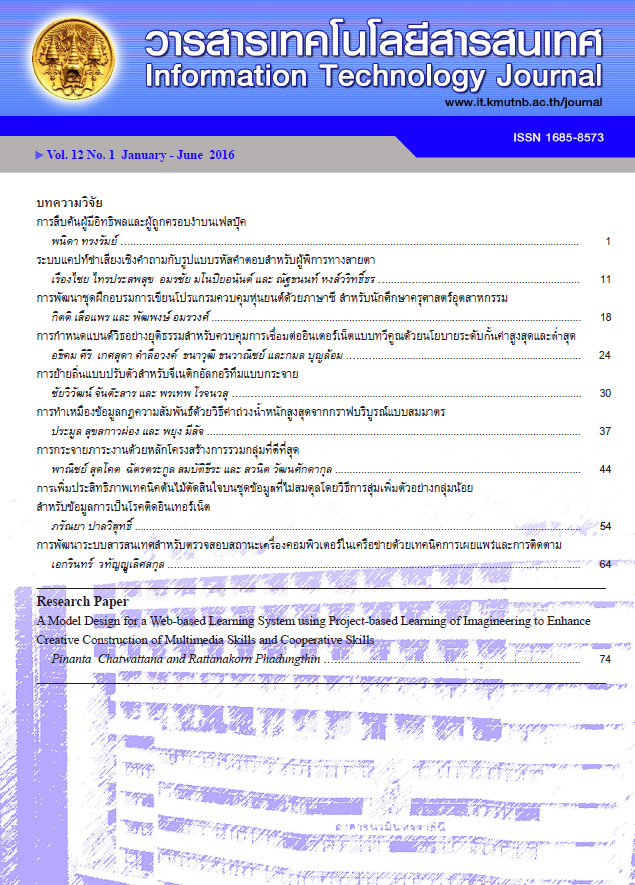การเพิ่มประสิทธิภาพเทคนิคต้นไม้ตัดสินใจบนชุดข้อมูลที่ไม่สมดุลโดยวิธีการสุ่มเพิ่มตัวอย่างกลุ่มน้อย
Main Article Content
Abstract
Internet Addiction Disorder is behavior of users in social online community that have spent excessive time on internet activities. This leads to many problems such as learning problem, relationship problem. This research aims to development of model for prediction of Internet Addiction Disorder of adolescents because many internet users are between the ages of 15 - 24 and many lack self-control. After analyzing the data were found class imbalanced problem. In order to improve quality of data, SMOTE were used to increase the minority class. Then decision trees J48, Iterative Dichotomiser 3 (ID3), Logistic Model Trees (LMT), Classification and Regression Trees (CART) and Random Forest (RF) were used to build the prediction models. Moreover, 10-fold cross validation ware utilized to split the data into the training and test set. This research has measured performance models with accuracy, sensitivity and the specificity. Experimental result demonstrated that Random Forest superior to J48, ID3, LMT and CART with accuracy 87.15%, sensitivity 85.89% and specificity 87.53% respectively
Article Details
Section
บทความวิจัย


